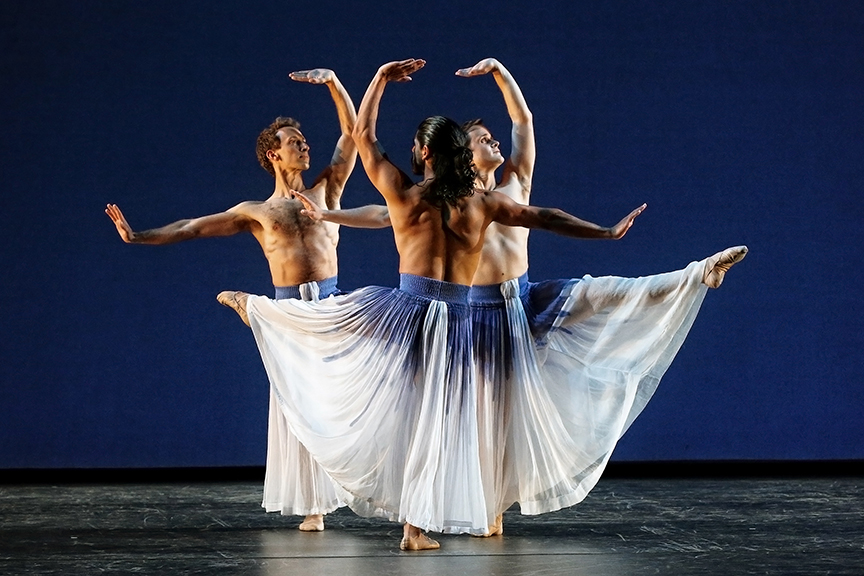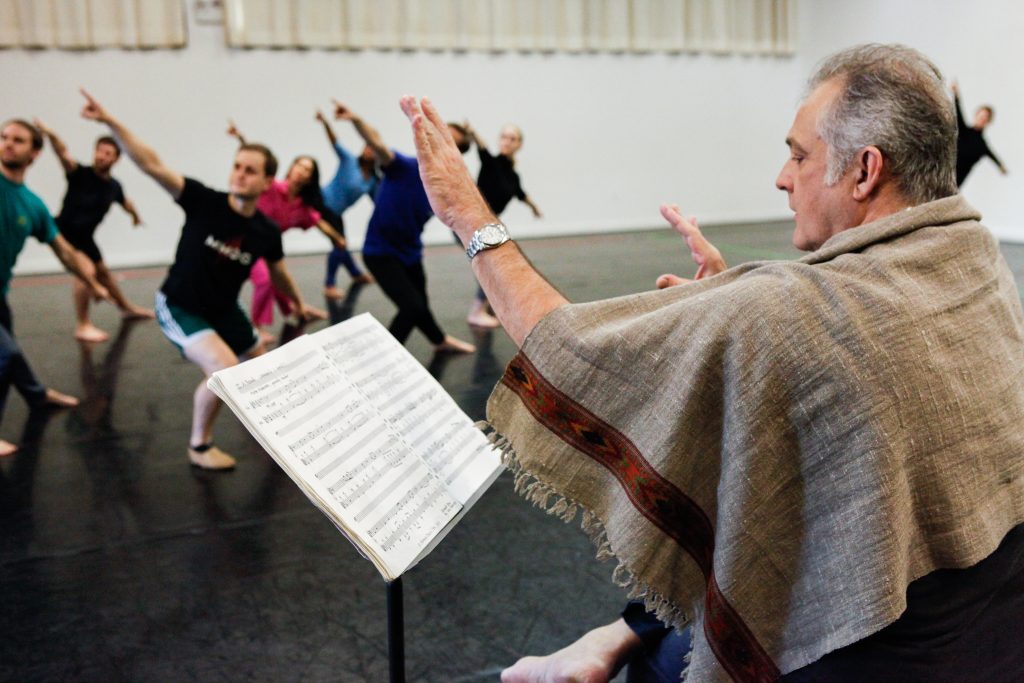Mark Morris Dance Group Soars at SummerFest 2019
Music Director Inon Barnatan continues to demonstrate why the 2019 La Jolla SummerFest is not your grandmother’s SummerFest. Wednesday, August 21, he and the festival’s Synergy Initiative Co-producer Clara Wu Tsai presented the renowned Mark Morris Dance Group, accompanied by SummerFest musicians, in the Baker-Baum Concert Hall.

Mark Morris Dancers [photo (c.) Prudence Upton]
When Handel was not churning out Italian operas or English oratorios or bristling concerti grossi, he amused himself by writing florid Italian vocal duets, and Morris selected two of these rarely performed Italian duets for “Arrows. Eros.” Agile soprano Jennifer Zetlin and commanding countertenor John Holiday gave a rapturous account of these florid gems, accompanied by a basic continuo adroitly supplied by harpsichordist Colin Fowler—who is also the Mark Morris Music Director—and cellist Clive Greensmith.

Mark Morris [photo (c.) Amber Star Merkens]
Elizabeth Kurtzman’s simple costumes—three dancers in pale blue and three in bright red—glowed magnificently against the deep blue translucent panels that lined the backstage of Baker-Baum. What an experience to view this Mark Morris first performance!
Morris selected nine traditional English lauguage folk songs arranged by Beethoven as the basis for his arresting 2010 dance “The Muir.” A few of these songs, such as Robert Burns’ “The lovely lass of Inverness” Walter Scott’s “Sunset” exhibit clear Scottish connections, so Morris’ title “Muir”—Scottish for moor—establishes the Scottish ethos. Soprano Zetlan was joined by tenor Robin Tritschler and baritone David Pershall as they took turns leading these winsome outliers in the canon of 19th-century Lieder. With Barnatan at the piano and violinist Andrew Wan and cellist Annie Jacob’s-Perkins, Beethoven’s generously scaled accompaniments suited Tritschler’s bright tenor and Pershall’s bold, colorful baritone perfectly, but they tended to overpower Zetlan’s lighter soprano.
Dancers Lesley Garrison, Laurel Lynch, and Nicole Sabella sped across the stage with confident strides, easily eluding the men—Dallas McMurray, Billy Smith, and Noah Vinson—who were so enthusiastically toasted them in the drinking song “Come fill, fill my good fellow.” For this number, Kurtzman gave the women long, flowing, diaphanous skirts in deep jewel tones, while the men looked eagerly plebeian in their black slacks and plain grey shirts.
Countertenor Holiday gave a bravura account of four Henry Purcell songs in Morris’ 1985 “One Charming Night,” suavely accompanied by the same two continuo players in “Arrows. Eros.” As his ample, alluring voice sailed confidently through the hall, two dancers—Mica Bernas and Dallas McMurray—carried on an extended conversation in assertive dance moves. Like many conversations that extend into the wee small hours, the conclusions the dancers achieved were not clear, but the music could not have been more exhilarating.
“The Office” from 1994 presented an easier story to read. Six dancers clad in work casual attire sit on mismatched chairs in some spacious anteroom, while a very formal, black-suited man with official clipboard firmly in hand periodically enters to summon one of the dancers offstage to the presumed office interview. To pass the time as they wait to be called, the dancers in the waiting room engage in athletic ensembles spurred by Anontín Dvořák’s Bagatelles from his Op. 47.
Scored for two violins, cello, and harmonium, these Bagatelles are some of the most charming Hausmusik every put onto paper, but like much of the work of this composer, their idiom tends to evoke bucolic scenes rather than the contemporary business world. This is Morris’ genius, of course: to perceive the perfect choreographic stimulus in the least likely places. For the group of four waiting dancers, Morris created tight, close interactions set to a vibrant scherzo, while a trio of dancers were given expansive, flowing movements to a gliding waltz in three-quarter time. Among the instrumentalists, it was easy to pick out the gleaming timbre of Augustin Hadelich’s violin. He was joined by violinist Andrew Wan, cellist Edward Erron, and Colin Fowler at the harmonium
Morris opened the program with “Prelude and Prelude” from 1984, a joyful, if at times arch, piece in which each dancer clenched a dagger in his mouth. He set the work to American composer Henry Cowell’s “Set of Two for Violin and Harpsichord,” featuring Hadelich and Fowler. I do not find this to be one of Cowell’s more convincing compositions, especially because his writing for the harpsichord is not particularly idiomatic. In Baker-Baum, this Cowell work sounded rather wan.
This concert was presented by the La Jolla Music Society’s SummerFest 2019 on Wednesday, August 21, 2019, at the Conrad Prebys Performing Arts Center in downtown La Jolla. This program will be presented again on August 22, and the festival’s final concert will be given on August 23 in the same venue.
